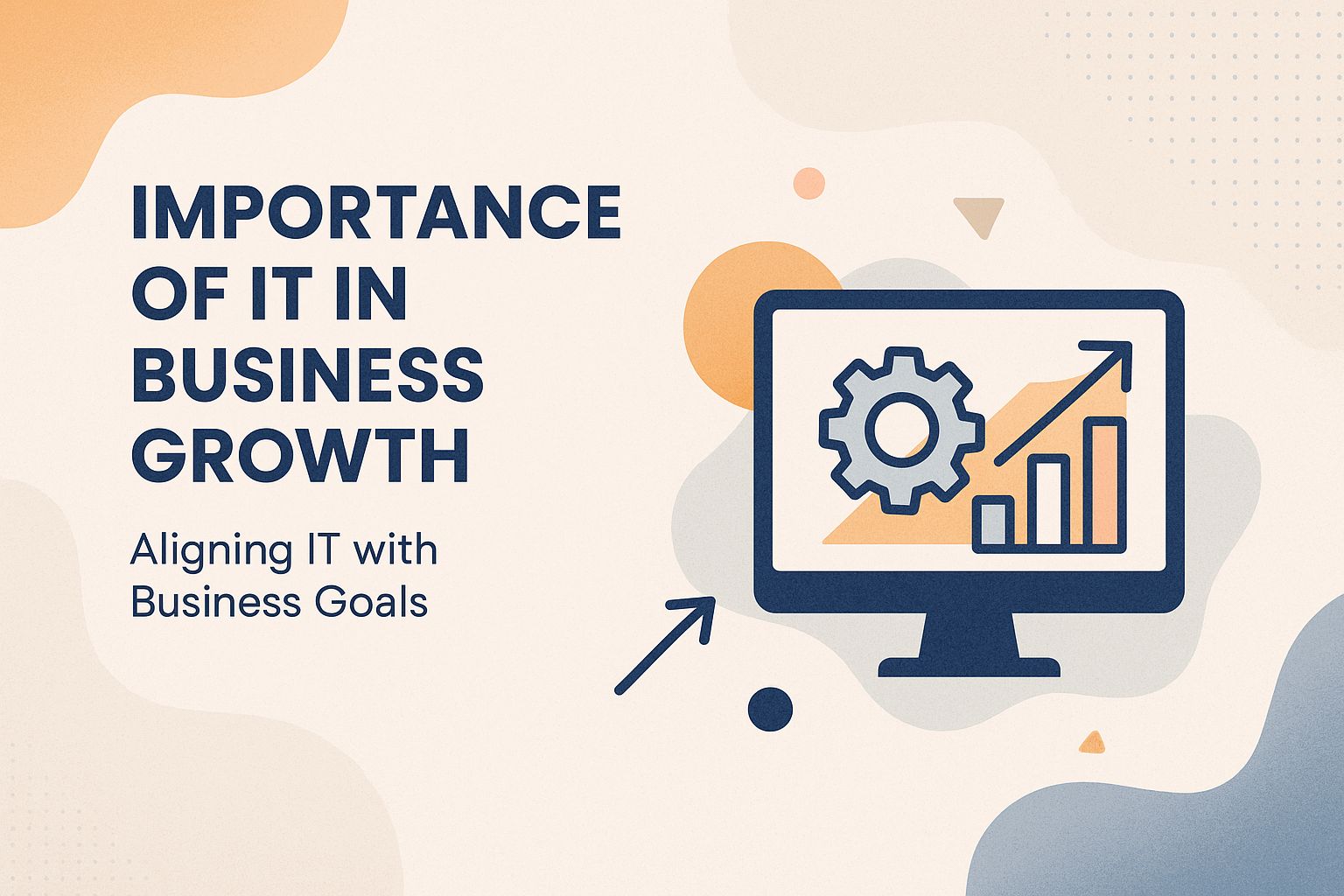How Strategic IT Planning Drives Growth for Asheville Businesses

Strategic IT planning drives growth for Asheville businesses. It combines technology and innovation with local entrepreneurship. As companies strive to align their IT investments with overarching business objectives, Understanding the key components of effective planning is essential. This exploration delves into the significance of IT in fostering growth, highlights successful case studies within the Asheville community, and addresses the challenges and future trends that shape this dynamic landscape. The insights reveal a roadmap for businesses looking to harness the full potential of their IT strategies.
The Importance of IT in Business Growth
Integrating IT strategically into business operations can significantly drive business growth, This provides Asheville businesses with a competitive edge by improving efficiency and fostering innovation.
Related insight: To further enhance your strategic implementation, explore our comprehensive guide on IT Consulting for Strategic Decision Making.

Aligning IT with Business Goals
To achieve this alignment, organizations should conduct a SWOT analysis. This will help identify strengths, weaknesses, opportunities, and threats in their current IT strategy.
Workshops can engage key stakeholders from various departments. This will gather insights and establish shared priorities.
It is important to define clear Key Performance Indicators (KPIs) that measure success in achieving strategic objectives and business goals.
Tools like Asana effectively manage projects. Trello offers a visual tracking system to monitor progress and ensure accountability. This enhances process improvement.
Key Components of Strategic IT Planning
A comprehensive strategic IT plan includes essential components. These include technology investments and resource optimization, which are crucial for leveraging IT consulting for strategic decision making. Together, they enhance organizational success and sustainability, as discussed in our detailed exploration of IT consulting.

Infrastructure and Technology Investments
Investing in the right IT infrastructure is essential. It supports business operations and scales with growth strategies. Organizations should start by conducting an IT assessment of their current infrastructure capabilities, which include servers, bandwidth, and storage options.
Cloud solutions like Amazon Web Services start at $3.50 per month. They offer scalable resources that adjust to varying demands. It is imperative to implement performance metrics to evaluate the return on investment, focusing particularly on uptime, speed, and user satisfaction.
Additionally, integrating collaboration tools like Slack or Microsoft Teams enhances teamwork within the organization. Establishing a clear plan that outlines the IT budgeting, resources, and desired outcomes will guide investments effectively and ensure alignment with overarching business goals.
Case Studies: Asheville Businesses
Several Asheville-based businesses serve as prime examples of successful strategic IT planning, illustrating how technology can drive growth and improve operational efficiency.
For instance, Blue Ridge Biofuels implemented Salesforce for customer relationship management (CRM), enabling them to streamline sales processes and enhance customer service. This transition resulted in a 20% increase in revenue compared to the previous year.
Similarly, The Orange Peel adopted Square for point-of-sale transactions, which not only improved efficiency during busy events but also provided valuable data analytics. Their optimized operations led to a 30% reduction in checkout times, significantly boosting the customer experience. Worth exploring: 5 Cost-Saving Tips from Asheville IT Service Experts could further enhance efficiency and profitability.
Both businesses clearly demonstrate that targeted IT investments can deliver measurable benefits.
Challenges in Strategic IT Planning
Implementing a strategic IT plan presents challenges. They may hinder progress without proactive solutions. Key challenges include budget constraints, evolving market demands, and hurdles related to technology adoption.
Organizations can use cost estimation tools like Cost Explorer to manage budget limitations. This helps accurately project expenses and ensures effective IT budgeting. To adapt to shifting market conditions, conducting regular SWOT analyses is essential for aligning the IT strategy with overarching business needs and local market trends.
To facilitate technology adoption and change management, frameworks like the ADKAR model should be considered, as they encompass awareness, desire, knowledge, ability, and reinforcement.
These approaches not only streamline the planning process but also cultivate a responsive IT environment that adapts to the organization’s strategic objectives and goals.
Future Trends in IT and Business Growth
Emerging technology trends reshape business growth, creating new opportunities for adaptable organizations.
One major trend is the integration of artificial intelligence (AI) and smart technologies, with projections from PwC estimating that by 2025, AI could contribute as much as $15.7 trillion to the global economy, influencing technology trends globally.
As cyber threats continue to escalate, businesses are expected to increase their cybersecurity investments by 10-15% annually, reaching an estimated $248 billion by 2025, according to IDC. Effective IT security measures, as mentioned in our insights on why Asheville businesses need to prioritize IT security in 2025, are crucial for protecting technology infrastructure.
Additionally, the shift toward remote work technologies is gaining momentum; Gartner predicts that by 2024, over 30% of the workforce will remain remote, prompting companies to invest in collaborative tools and digital infrastructures that facilitate hybrid work environments and enhance digital transformation.
FAQs
What is strategic IT planning? How does it drive growth for Asheville businesses?
Strategic IT planning is a process that involves identifying and prioritizing technology initiatives to achieve business goals. It drives growth for Asheville businesses by aligning technology investments with business objectives, improving efficiency, and creating competitive advantages.
Why is strategic IT planning important for Asheville businesses?
Strategic IT planning is vital for Asheville businesses. It helps them stay competitive, adapt to market changes, and make informed technology decisions that support growth.
How can strategic IT planning help Asheville businesses save money?
By identifying and prioritizing technology investments, strategic IT planning can help Asheville businesses save money by avoiding unnecessary or redundant technology expenses. It also helps optimize technology resources and improve overall efficiency.
What are some common challenges that Asheville businesses face when it comes to strategic IT planning?
Some common challenges that Asheville businesses face with strategic IT planning include budget constraints, lack of IT expertise, and difficulty in aligning technology initiatives with business goals. It is important to work with a trusted IT partner to overcome these challenges and achieve successful IT planning.
What are the key components of a successful strategic IT plan for Asheville businesses?
A successful strategic IT plan for Asheville businesses should include a clear understanding of business goals, a thorough assessment of current technology infrastructure, a roadmap for future technology initiatives, and a budget that supports the plan’s implementation.
How often should Asheville businesses review and update their strategic IT plan?
As technology and business needs evolve, it is important for Asheville businesses to continuously review and update their strategic IT plan. This can range from annually to every few years, depending on the organization’s goals and industry changes.




